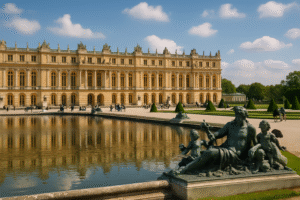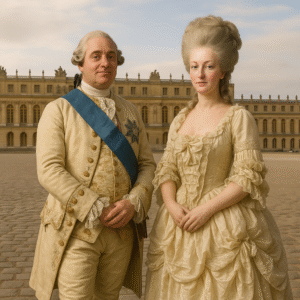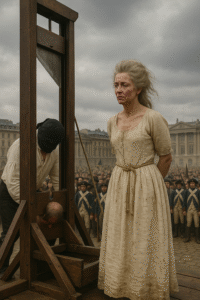
Paris Orly airport and CDG (Charles de gaulle) to the City of Versailles


8-Seater Van Transfers – From Versailles or To Paris Airports – More Affordable Than 8 passengers Shuttle Taxis.

Welcome to ASC Airport Shuttle Cab, your reliable provider of private 8-seater VTC services to and from Versailles and the Paris airports. Whether you’re departing or arriving at Charles de Gaulle (CDG) or Orly (ORY), we offer a comfortable, stylish, and cost-effective alternative to traditional taxis.
✅ Spacious and Affordable 8-Seater VTC Vehicles
Traveling as a group with family, friends, or colleagues? Our modern vehicles accommodate up to 8 passengers (plus driver) and provide ample space for luggage. Often cheaper than 8-seater taxis in Versailles, our VTC service guarantees comfort, convenience, and savings.
✈️ Airport Transfers – CDG & Orly
We offer door-to-door service from or to all Paris airport terminals:
-
Charles de Gaulle (CDG): Terminals 1, 2A, 2B, 2C, 2D, 2E, 2F, and 2G
-
Orly (ORY): Terminals 1, 2, 3, and 4
Our experienced, punctual drivers ensure a smooth ride and drop you off directly at your departure terminal or pick you up right after landing, for a stress-free travel experience.

CDG Airport to Versailles – Affordable 8-Seater Van Taxi Transfer
Travel comfortably from Charles de Gaulle Airport (CDG) to the city of Versailles with our 8-seater van taxi service, ideal for families, business groups, or tourists. Our service offers fixed and transparent pricing, often more affordable than traditional large taxis available at the airport or in Versailles.
The distance between CDG Airport and Versailles is approximately 50 kilometers (31 miles), and the journey usually takes around 55 to 70 minutes, depending on traffic.
Private 8-Seater Van from Orly Airport to Versailles – Comfort at a Better Price
Traveling from Orly Airport to Versailles? Our private 8-passenger van service is the perfect solution for those who value space, convenience, and a clear, affordable price — often lower than traditional large taxis from the airport or within Versailles.
Covering a distance of about 25 km (15.5 miles), the trip takes approximately 30 to 45 minutes, depending on traffic.
Why choose our service?
- Spacious van ideal for families, business groups, or travelers with lots of luggage
- Set fares with no hidden costs – what you book is what you pay
- Professional drivers who meet you directly at the terminal with your name sign
- 24/7 availability, including early morning or late-night transfers
- Direct drop-off at your hotel, home, or the gates of the Château de Versailles
Skip the wait and uncertainty of finding a large taxi. Our vans are ready when you are – offering comfort, reliability, and a better price for your group transfer from Orly to Versailles
Whether you’re heading to a hotel, a business meeting, or visiting the famous Château de Versailles, choose a smarter and more cost-effective alternative to the traditional taxis.
→ Book now and enjoy a stress-free trip to CDG or Orly!
—————————————————————————–
Additional Information for Your Transport Service
We provide private transportation from the city of Versailles to the airports only.
Our company is based near Charles de Gaulle Airport (CDG).
🚖 Private Transport at Competitive Rates
- Fixed prices, clearly established in advance via our express quote form
- Book your VTC from Versailles to Roissy Charles de Gaulle Airport easily and securely
- Why choose the express quote?
Because it’s faster to get your rate — also available via SMS/WhatsApp at +33 6 24.22.42.50
🕒 Service Available 24/7, All Year Round
Our minivans and VTCs operate 24 hours a day, 7 days a week, 365 days a year.
Fares may vary depending on the season, day, and time of your ride.
Taking all of these criteria into account, we calculate your custom airport shuttle price.
🚐 Book your VTC for:
- 4 passengers
- 5 passengers
- 6 passengers
- 7 passengers
- 8 passengers + driver
🚐 Shuttles from Versailles to Charles de Gaulle Airport (CDG)
We provide private van transfers between Versailles and CDG Airport.
Special group rates available.
Travel comfortably with our 8-seater shuttles.
We can transport up to 12 passengers — for larger groups, we provide two 8-seater VTCs.
✈️ Shuttles from Versailles to Orly Airport (ORY)
We offer private, non-shared transfers from your home or hotel in Versailles to Orly Airport.
Get your personalized rate via our express quote form.
🚆 Transfers from Versailles to Chessy Marne-la-Vallée Train Station (TGV INOUI & OUIGO)
Our company, A.S.C. Airport Shuttle Cab, also provides transportation from Versailles to Marne-la-Vallée Chessy Station, where you can catch TGV INOUI or OUIGO high-speed trains.
About the City of Versailles
Versailles Town Hall
Versailles is a French city located in the Yvelines department. It was founded in the 17th century by King Louis XIV and later became a birthplace of the French Revolution. Versailles was designated the capital of the Yvelines department in 1968.
The city is world-renowned for the Palace of Versailles and its expansive gardens, both listed as UNESCO World Heritage Sites.
Located just 16.8 km from Paris, Versailles is part of the Greater Paris area and shares a border with the Hauts-de-Seine department.
Before the construction of the palace, the area featured hilly terrain, which was leveled during the building process.
⚜️ The Coat of Arms of Versailles
The two-headed rooster on the crest symbolizes the city’s dual obligations — toward both the Royal Palace and the municipality.
Heraldic description: “Azure with three golden fleur-de-lis, a silver chief bearing a natural-colored two-headed rooster.”
Rue des Deux Portes & Airport Access
From the city of Versailles, you can easily travel to Roissy Charles de Gaulle Airport (approx. 40 km away) and Orly Airport (approx. 25 km away) via private shuttle or VTC service.
A Few Words About Versailles
Located in the Île-de-France region, the city of Versailles is globally recognized for its majestic Château de Versailles, a powerful symbol of the French monarchy under King Louis XIV. Though the palace is its most iconic landmark, the city also boasts a rich urban, cultural, and political heritage.
The history of Versailles began in earnest in 1623, when King Louis XIII built a small hunting lodge in the village. His son, Louis XIV, transformed it into a vast palace, launching construction in 1661. The goal was to create a residence grand enough to host the royal court and the government, away from the turbulence of Paris.
Under the direction of architect Louis Le Vau, painter Charles Le Brun, and landscape designer André Le Nôtre, the Palace of Versailles became a masterpiece of classical architecture and formal gardens, symbolizing the absolute power of the Sun King.
In 1682, Versailles became the official capital of the Kingdom of France, a role it maintained until the French Revolution in 1789. For over a century, the city was the stage for countless historical, political, and cultural events that shaped the nation.
One of the most pivotal moments was the Treaty of Versailles, signed in the Hall of Mirrors in 1919, which ended World War I and redrew the map of Europe.
After the Revolution, the palace lost its royal function and was transformed into the Museum of the History of France in 1837, under King Louis-Philippe. The city itself continued to expand beyond the palace, evolving into a prestigious residential area rich in heritage and architecture.
Today’s Versailles: History & Culture
Modern-day Versailles is not only a top tourist destination, thanks to its palace and gardens, but also a cultural hub with festivals, markets, and events celebrating its artistic legacy.
It is also an important administrative center, home to several government institutions. (Note: The Senate is located in the Palais du Luxembourg in Paris, not in Versailles.)
The story of Versailles is a powerful testament to the grandeur of France, the ambition of its kings, the genius of its artists, and the enduring spirit of its people. It remains a timeless symbol of French culture and history, continuing to inspire and fascinate visitors from around the world.
The History of the Palace of Versailles – A Timeless Royal Legacy
The Palace of Versailles, located just outside of Paris, is one of the most iconic and visited landmarks in France. Originally a modest hunting lodge built by King Louis XIII in 1623, it was transformed into a grand royal residence by his son, King Louis XIV, the “Sun King,” in the late 17th century. Versailles became the official seat of the royal court in 1682, symbolizing the absolute power and glory of the French monarchy.
Designed by some of the greatest architects and landscape artists of the time, including André Le Nôtre and Jules Hardouin-Mansart, the palace is famous for its Hall of Mirrors (Galerie des Glaces), lavish royal apartments, and breathtaking gardens.
Versailles remained the center of political power until the French Revolution in 1789, when King Louis XVI and Queen Marie Antoinette were forced to leave the palace. After the revolution, it became a museum of French history and a symbol of both the grandeur and downfall of the monarchy.
Today, the Château de Versailles is a UNESCO World Heritage Site, attracting millions of visitors every year. Whether you’re visiting the stunning gardens, taking a guided tour, or exploring the Trianon estates, Versailles offers a unique glimpse into France’s royal past.
The Last King of France – The Tragic Story of Louis XVI
Louis XVI was the last king of France before the fall of the monarchy during the French Revolution. Born in 1754, he became king in 1774 at the age of 20. He ruled during a time of great financial crisis, growing unrest, and calls for reform.
In 1770, he married Marie Antoinette, an Austrian archduchess, which was meant to strengthen the alliance between France and Austria. However, their lifestyle at the Palace of Versailles became a symbol of royal excess and detachment from the suffering of the French people.
As the economic situation worsened, Louis XVI struggled to introduce reforms and lost the support of the public. In 1789, the French Revolution began, and by 1791, the royal family attempted to flee but was captured in Varennes. In 1792, the monarchy was abolished, and Louis XVI was put on trial for treason.
He was found guilty and executed by guillotine on January 21, 1793, on Place de la Révolution in Paris (now Place de la Concorde). A few months later, Marie Antoinette was also executed. Their deaths marked the end of centuries of monarchy in France and the rise of the Republic.
Today, the tragic story of King Louis XVI and Queen Marie Antoinette continues to fascinate visitors from around the world. Their lives are deeply connected to the Palace of Versailles, which remains a powerful symbol of France’s royal history and revolutionary past.
